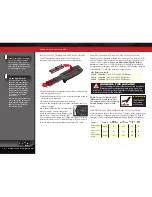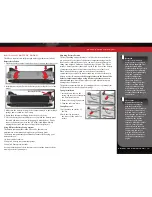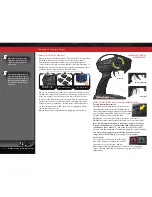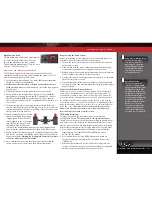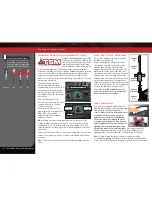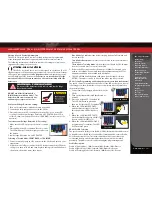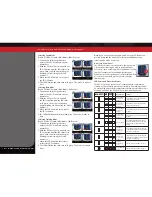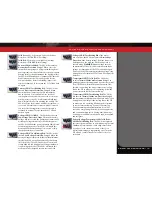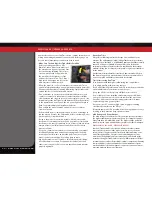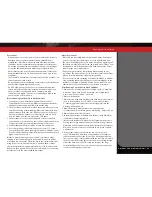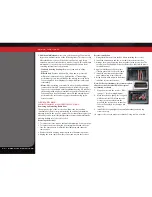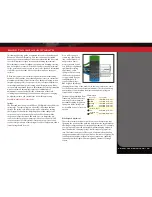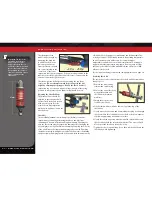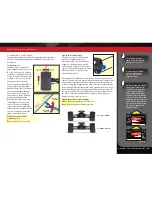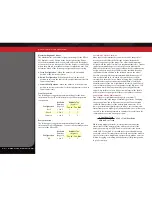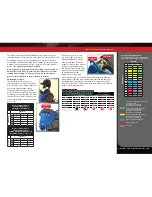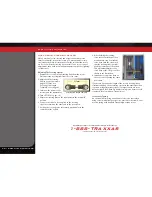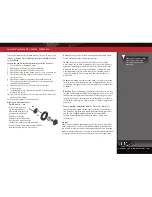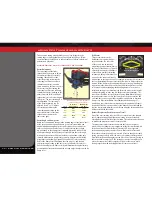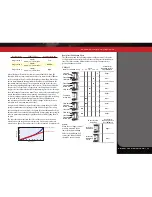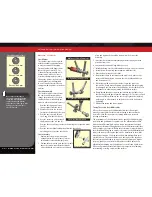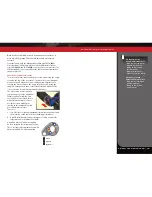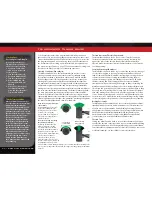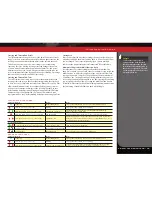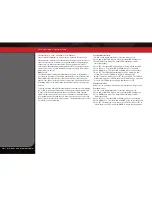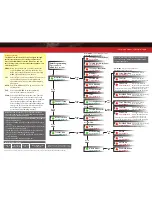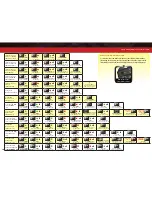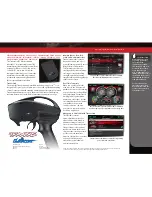
26 • E-REVO VXL BRUSHLESS
BASIC TUNING ADJUSTMENTS
Maximum Alignment Limits
The maximum toe and camber alignment settings for the E-Revo
VXL Brushless can be limited by the ride height setting. Do not
exceed the maximum limits or you could experience interference
between suspension components. The ride height is controlled by
where the push rod is installed in the lower suspension arm. First
determine which of the following configurations you are using:
a. Stock Configuration
– When the pushrod is in the middle
position of the lower control arm.
b. Raised Configuration
- When the pushrod is in the raised
position to increase the vehicle’s ride height (innermost hole in
lower control arm).
c. Lowered Configuration
- When the pushrod is in the lowered
position to decrease the vehicle’s ride height (outermost hole in
lower control arm).
Front Suspension
The following are suggested maximum settings for the front
suspension in order to avoid interference between suspension
components:
Rear Suspension
The following are suggested maximum settings for the rear
suspension for all configurations. Toe out is not normally used on
the rear of the E-Revo VXL.
WHEELS AND TIRES
Many types of aftermarket tires and wheels can be adapted for
use on your model. Most will affect the overall width and the
suspension geometry of the model. The offsets and dimensions
designed into the model’s wheels are intentional; therefore, Traxxas
cannot recommend the use of other non-Traxxas wheels with
different specifications. The diameter of the wheels is an innovative
design, and there is a variety of different tires available for you to
experiment with in addition to the included tires on the model
(listed in your parts list). Experimentation with different types of
tires is recommended to see which ones work the best on the
terrain where the model is run. When selecting tires, consider the
overall diameter and the rubber compound (hard or soft). If the
overall diameter of the tire is significantly increased, you will need
to use a smaller pinion gear to compensate for the larger tire. Soft
compound tires with many short spikes generally work better
on hard, dry surfaces. In loose dirt, a tire with large spikes should
perform better. See your parts list for accessory wheels and tires.
MOTORS AND GEARING
One of the more significant advantages to your model’s
transmission is the wide range of available gear ratios. Changing
the gearing allows you to fine tune the speed of the model and
control the temperatures of the battery pack and motor. Use a
lower gear ratio (numerically larger) to reduce current draw and
temperatures. Use a higher gear (numerically lower) to increase top
speed. Use the following formula to calculate the overall ratio for
combinations not listed on the gear chart:
When using higher gear ratios, it is important to monitor the
temperatures of the battery, motor, and speed control. If the
battery is extremely hot (150°F) and/or the motor is too hot to
touch (180°F), your model is probably over-geared and drawing
too much current. This temperature test assumes that the model is
close to factory stock weight and operates freely with no excessive
friction, dragging, or binding, and the battery is fully charged and
in good condition.
Configuration
Available
Camber
(degrees)
Available Toe
(degrees)
Toe In Toe Out
Stock
+3 to -5
3
3
Raised
+3 to -1
1
1
Lowered
+3 to -5
3
3
Configuration
Available
Camber
(degrees)
Available Toe
(degrees)
Toe In Toe Out
All
+3 to -5
3
2
# Spur Gear Teeth
x 5.69 = Final Gear Ratio
# Pinion Gear Teeth

